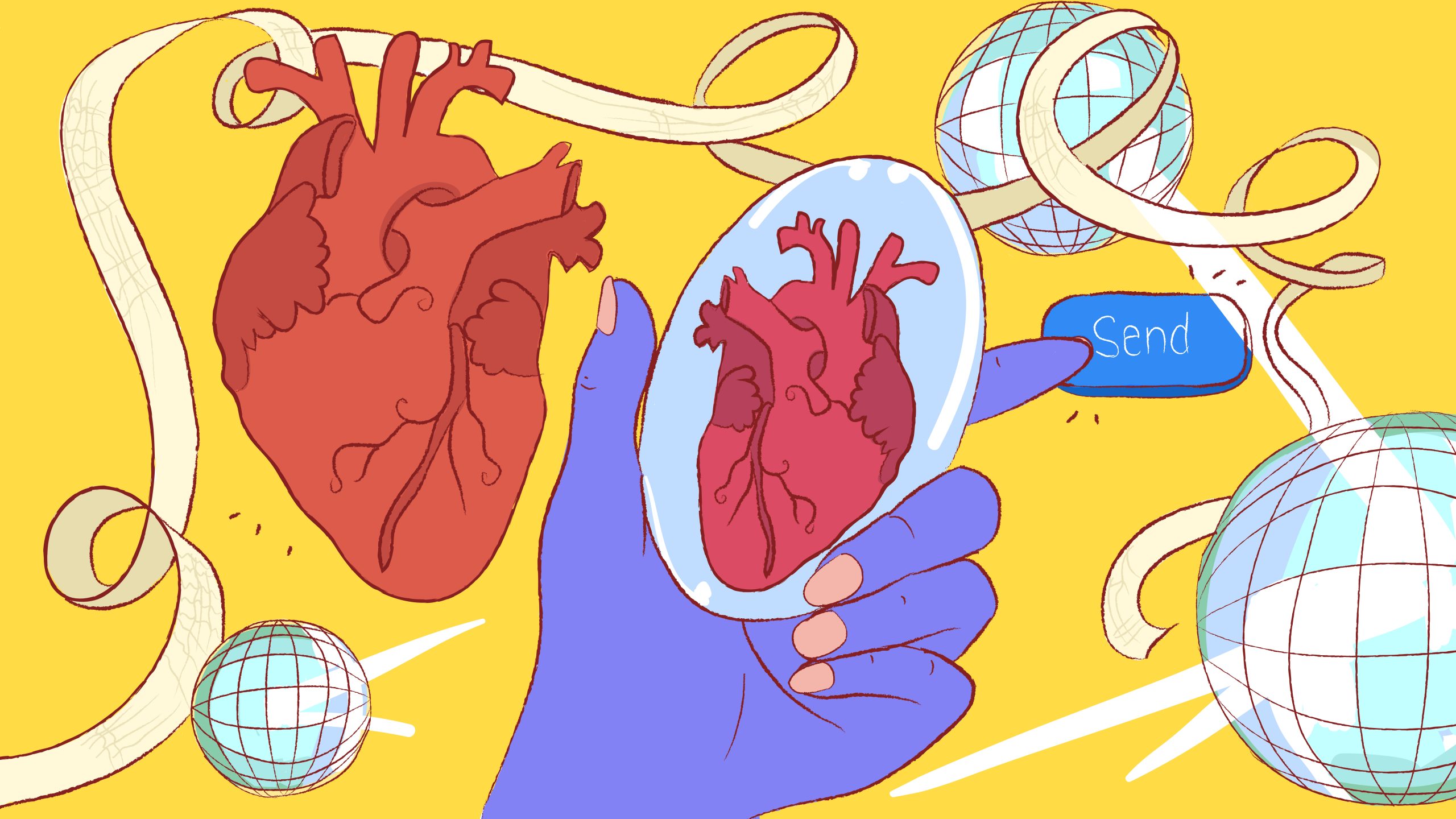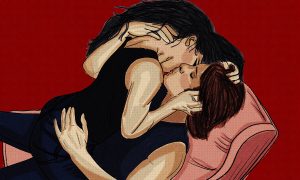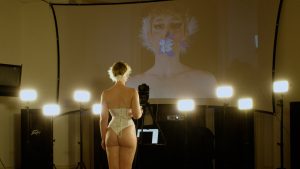A little after 7am, I put a notebook and a copy of Dodie Bellamy’s “When the Sick Rule the World” in a tote bag and walked to the nearest emergency room. I suspected that I had appendicitis, recognizing both my inability to defecate for several days and intermittent pain in the lower right-hand side of my abdomen as symptoms. While waiting for the results of a urine test and CT scan, I tried reading Bellamy’s collection of memoiristic essays about sickness. Although, it felt like an increasingly poor choice given my circumstances. I returned the book to my bag. The droll nurse returned to deliver the verdict: my appendix was inflamed. I needed emergency surgery.
Sometime before midnight, I was wheeled upstairs to the operating room, where an anesthesiologist gave me a round, white pill. Ativan, she explained, seeing my confused expression, It’s like a stronger Xanax. The Ativan kicked in, and I dozed off.
I regained consciousness while one of the nurses removed my catheter and, convinced I was going to piss, I tried to warn her, but my voice was a hoarse whisper, so I desperately smacked the side rails of my gurney. She gave me a disbelieving expression but placed a small container between my legs and left my side for a few minutes. She returned. See, she said, showing me the container, just a little bit. There were a few droplets of pale yellow urine.
In the morning, I ignored the sign on the opposite wall that instructed me to call a nurse whenever I needed to use the restroom and unplugged the IV’s tangled cord so I could pull it along behind me. I gently lowered myself onto the toilet seat, pulling aside the gown to inspect the three bandages running down the center of my abdomen. The gauze was brown underneath the transparent film dressing. I summoned the nurse, hoping to be discharged, but she listened with wide eyes as I made incoherent sounds and brought me breakfast instead of paging the surgeon. Bored, I fetched Bellamy’s book and continued to read, underlining passages I found interesting.
Days later, while bedridden at home, I flipped through the book again. I was bored of watching Netflix or playing Animal Crossing and thought I would find it helpful to write but there were no art exhibitions whose press releases I could regurgitate in my pitiful attempts to write a review. I had no idea what to write about; I decided to start a blog. My first entry was a short piece of prose about my brief stint in the hospital. I borrowed a quote from one of Bellamy’s essays to use an epigraph:
“People are desperate to get it back, to experience this exotic thing, the present moment. Kinky sex, amusement parks, expensive weekends with Pema Chodron, extreme sports, being thwacked in the ribs with a billy club all invite us to step away from the anemic glow of our monitors and into sunlight and disco balls.”
Unable to leave my bed for anything longer than short walks around my neighborhood, I was lonely and low-spirited but, like many people I knew, naively believed that life would be back to normal within a few weeks. I wanted to write about the alienating experience of being alone in the hospital during this extraordinary time. When I look back at this entry, which appears in fragments in this introduction, I return to this quote from Bellamy, trying to understand its importance to me at the time. What does it reveal about my first piece of autobiographical writing that I ever shared publicly? At the time, I also wanted to step away from the anemic glow of my monitors, to take pleasure in simple moments again dancing with friends at a crowded nightclub or riding the CTA to work in the morning. By writing, I wanted to seize time, to understand this experience and explain the effect of isolation, the loss of the present moment. I wanted to indulge in the pleasure of narrative, of arranging events into a form that would allow meaning to emerge or for me to impose it.
My friends responded encouragingly to my first blog post and urged me to continue writing. Motivated by their positive reception, I devoted more time to the blog. I wrote an entry a few months later titled “Do I Want to Be a Woman?” The post, like the title suggests, was my public attempt to resolve a private conundrum I’d be mulling over in isolation: Did I want to start hormone replacement therapy and medically transition? Uncertain of how to answer this question, I started by identifying my earliest experiences of gender: my childhood fixation on Halle Berry’s leather outfit in the the 2004 Catwoman (I attempted to replicate Halle’s lithe walk for weeks after I watched the movie, swaying my hips so dramatically that I accidentally bumped my brother into the wall while he walked past me in the hallway) and the social isolation I experienced because my closest friends were girls. My heart dropped whenever a teacher separated the class by gender, and I was never allowed to join my friends’ sleepovers. I juxtaposed these memories with my experience of homophobia as an adult, being called a slur or, once, being spat on. I was a less skilled writer and, unable to substantially engage with my own question, decided against starting hormone therapy or gender affirming surgery in the blog post.
After I shared the entry on Instagram, an ex-lover, who once suggested that I would grow out of my nonbinary identity as I aged, messaged me and praised my writing for not being “too sentimental.”
Too sentimental.
This phrase has vexed me for years. It felt backhanded and, while I didn’t put much weight into the critique of an ex who I softly ghosted after he told me that he didn’t like it when I wore heels or feminine clothes in public, the implication of this phrase worried me. Is sentimentality a bad quality in writing? Was his phrasing simply a misnomer? Had my ex-lover meant to say that I avoided navel gazing, or being narrow-minded or exhibitionistic and attention-seeking, or, most troubling, narcissistic and self-aggrandizing in my writing? I subconsciously understood these were bad qualities for writing to possess and that autobiographical writing has historically been seen as a genre of the self-absorbed. I did not understand how I could avoid these qualities emerging in my personal writing, and I was paralyzed by perhaps even more fundamental questions: Why is sentimentality a bad quality in writing? Why couldn’t I be more sentimental in my writing?
Without an answer to these questions, I abandoned my blog. Two months after this exchange with my ex, I deleted it entirely.
I returned to arts journalism and produced short, lackluster write-ups for digital exhibitions because I believed that I lacked the vulnerability, resiliency, and fierce commitment to self-reflection that autobiographical writing demands. I stopped writing my blog because I felt that I wasn’t skilled or perceptive enough as a writer to look inward—inviting readers into my most personal experiences—while simultaneously turning my gaze outward to understand how my stories could be a lens to understand the human condition at large. I was embarrassed by the idea that strangers, or my friends and family, might read my work as navel gazing or exhibitionistic.
Year later, I discovered Melissa Febos’ “Body Work: The Radical Power of Personal Narrative.” A former dominatrix and the author of two collections of essays and a memoir, Febos reflected on her earlier books to explore her relationship and devotion to personal writing in “Body Work.” In the opening chapter “In Praise of Navel Gazing,” she writes:
“Navel-gazing is not for the faint of heart. The risk of honest self-appraisal requires bravery. To place our flawed selves in the context of this magnificent, broken world is the opposite of narcissism, which is building a self-image that pleases you.”
In one revelatory sentence, Febos defends personal writing against the accusation of being navel gazing, articulating a distinction between narcissistic writing where writers create self-flattering narrative and honest personal writing. This distinction became a tool to assess my own autobiographical writing. I could interrogate my writing. Have I engaged in vulnerable self-appraisal or am I attempting to guard myself from potential judgment and critique? Are there details that I’m omitting, hiding, or altering in my writing? While all writing requires omission, often for clarity and cohesion, I am interested in confronting moments where I’ve altered the truth to portray myself, or my behavior, in a more flattering way for my readers.
These questions empowered me. When I wrote about personal debt last year, explaining how I racked up $10,000 in credit card debt buying designer clothes, cosmetics, and laser hair removal—all things I felt were necessary for a “successful” transition—I struggled to write. I wanted to explain how material goods and medical care could alleviate the stress of transitioning in an overtly transphobic culture and protect me from violence, which allowed me to justify my ballooning debt. But I worried readers would see my choices as irresponsible or selfish and considered lying about or omitting the price of certain purchases and the size of my debt to dodge potential judgment. Eventually, I published the piece with truthful amounts, trusting my readers. I explained the violence and harassment I experienced when I did not pass in public and my fervent belief that a certain dress or pair of shoes would help me avoid these scenarios, making my debt an acceptable burden. The essay was an attempt to apply my intellect, and the intellects of other writers, to my experience as a transfeminine person and to make sense of the structures of power that oppress me and others. In short, this essay required nothing short of honest self-appraisal; the self-image that emerged in this piece was not one that pleased me.
A question continued to linger though: Why was I drawn to personal writing? Was I possessed by an unusual desire to expose myself to readers for pleasure?
I am not the first writer who has felt the need to justify the act of autobiographical writing. In her novel “Simple Passion,” the French writer and Nobel laureate Annie Ernaux recounts a love affair with a married Russian ambassador that has recently come to an end. She ruminates on the act of writing throughout the autobiographical novel, as if she feels an acute need to justify her reasons for writing the novel, to intellectualize and defend her project from critiques of being navel-gazing or exhibitionistic. She writes: “It is a mistake to compare someone writing about their own life to an exhibitionist, since the latter has only one desire: to show himself and be seen at the same time.”
She suggests that personal writing cannot be exhibitionistic because of this delay between the act of confession and the act of discovery. The writer scribbles their secrets in private for a reader who discovers them later, preferably when the author is not around to observe their reaction. Vulnerability occurs without the emotional stakes of showing oneself and being seen at the same time. Melissa Febos also suggests in “Body Work” that confession is the core of her personal writing, the desire to reveal her secrets, even at the risk of losing respect, or love.
Both these writers feel compelled to defend autobiographical writing, revealing implicit bias against autobiography in literature, a genre often associated with women. Ernaux’s novel is littered with justifications for and observations about her compulsion to write about her affair and overwhelming desire for a much younger, married man. Febos, writing about the craft of personal writing, tackles this bias against the genre more literally, dispelling the idea that an autobiographical writer merely publishes their diary. She argues that this bias is often a “sexist mechanism, founded on the false binary between the emotional (female) and the intellectual (male), and intended to subordinate the former.” Scared of straying into the emotional and having my writing be seen as lesser or feminine, I opted to regurgitate the ideas of other writers and rarely reflected my own experiences in my writing and analyzed them for meaning because I thought it would prove my intelligence, my ability to align myself with a (male) intellectual milieu, therefore the merit of my writing. Spoiler: It didn’t.
After I abandoned my blog, my art writing began to feel incidental and irrelevant. It lacked a reason to exist beyond confirming that I could arrange grammatically correct sentences. I stopped writing altogether.
The following winter, nearly a year after my surgery, I indulged in a short-lived romance. I gave my crush a copy of Torrey Peter’s “Detransition, Baby” that I strategically filled with marginalia, convinced our shared experience of the book would bring us closer. It didn’t. He started to pull away and, after I confronted him for canceling plans, he texted me and said he didn’t want to see me anymore. I demanded that he return my book. We went for a walk where I berated him for being emotionally obtuse. During our conversation, I admitted that I wanted to start hormone therapy. Overwhelmed by the immensity of this decision and the pain of rejection, I wrote feverishly. I produced a dizzying, experimental prose piece that borrowed from “Detransition, Baby” and a few other novels to express the mix of emotions I was experiencing. I naively thought my crush would read the essay, understand the intensity of my desire for him, and ultimately revive our romance—which I felt had been unfairly cut short.
A few days after the essay was published, I sent it to my crush. We met during a late July thunderstorm one afternoon and sheltered in my friend’s apartment where I was dog sitting. We had our final conversation over tea in the living room. Self-conscious as I watched him pet my friend’s excitable corgi, I apologized for turning him into a foil for my emotional development in my essay. He interrupted me and insisted that I should be able to write about him, but he thought my essay wasn’t even about him or what had transpired between us; he thought it was a story about myself. Looking back, I think he’s right. While I opened with descriptions of our romance and the shock of being rejected, I devoted greater attention and detail to stories about my sister being attacked by my uncle’s dog and raising a baby muskrat that my brother and I found abandoned after a flood in our suburb than I did to our affair. The essay was my attempt to explore loneliness, abandonment, and pain through writing. We didn’t start dating again after he read my essay, but I realized writing this personal essay felt more meaningful than anything I’d previously written.
Which posed a new question: How could I explain why I write and, more specifically, why I am drawn to autobiography?
As I considered how I might broach an answer, I returned to Annie Ernaux’s “Simple Passion,” where she writes:
“Sometimes I wonder if the purpose of my writing is to find out whether people have done or felt the same things or, if not, for them to consider such things as normal. Maybe I would also like them to live out these very emotions in turn, forgetting that they had once read about them somewhere.”
When I started to write this essay, I was initially motivated by a desire to communicate my experience of our brief relationship to my crush. I hoped my essay, if it couldn’t make him reciprocate my attraction, would allow me to articulate the importance of our encounter and convince him that my outsized response was, perhaps, normal. However, as I continued to write, I became less focused on his reception and wrote to a broader audience. I wanted to understand why I felt so drawn to someone who was clearly unavailable and to connect this experience of rejection to earlier memories of failing to nurture someone and the desire to hurt someone in an attempt to make it less painful or, if not, at least useful. I wanted my readers to understand why being loved or not being loved affected me so deeply. And autobiographical writing became a way to understand and be understood. To see and be seen. Which I would also consider a form of love.
An early version of this essay was presented as a lecture for the School of the New York Times on February 1, 2023. Thank you to Sheena Nomura for inviting me to reflect on my writing practice.
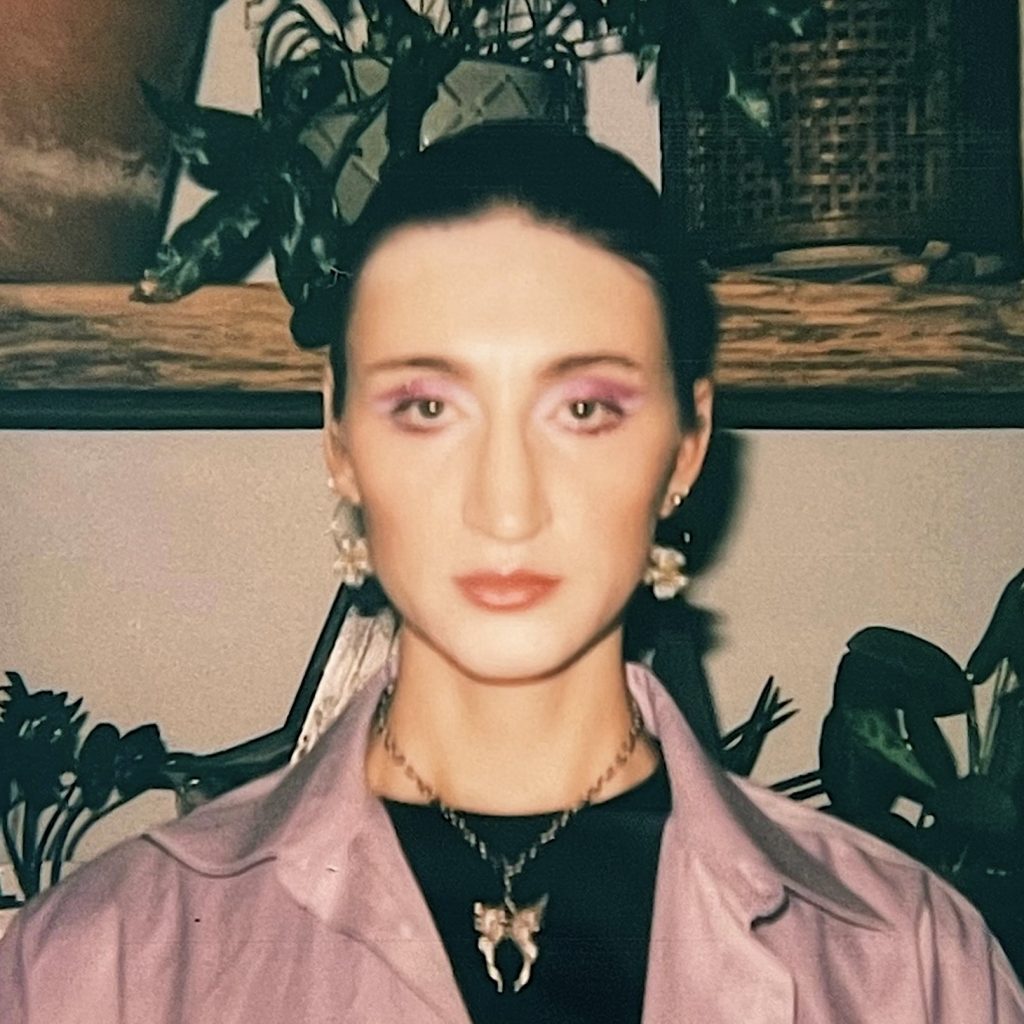
About the author: Riley Yaxley is a writer whose tenderhearted work evokes memories in order to contemplate the self and the ways we make sense of the world and our place in it. Her work has appeared in Catapult, Sixty Inches from Center, Chicago Gallery News, and the School of the Art Institute of Chicago’s journal of arts administration & policy.
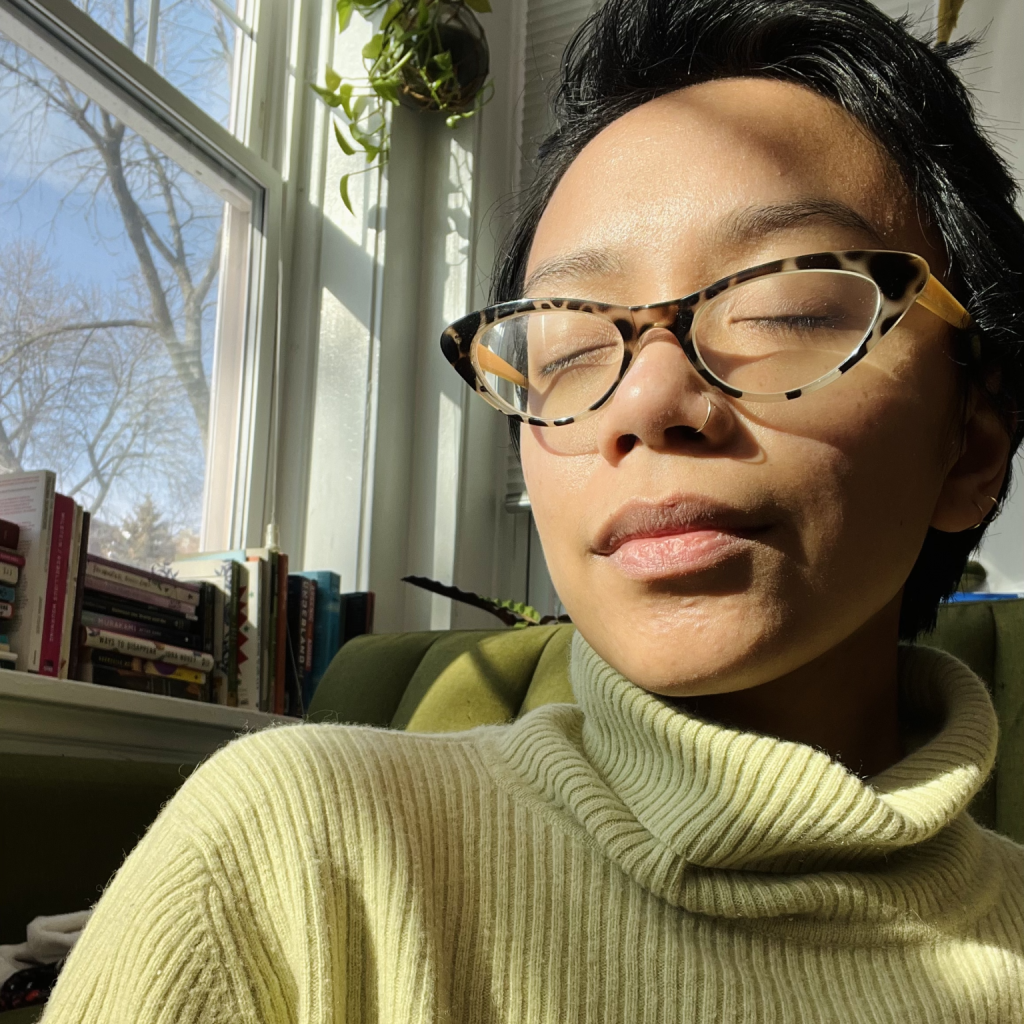
About the illustrator: Peregrine Bermas is a creative and curious earthling living in their birthplace, so-called chicago. Their practices include illustration, ritual, somatics and herbology. As a community herbalist, Peregrine is passionate about holding space for remembrance of ancestral, kitchen-accessible and bioregional medicine.
